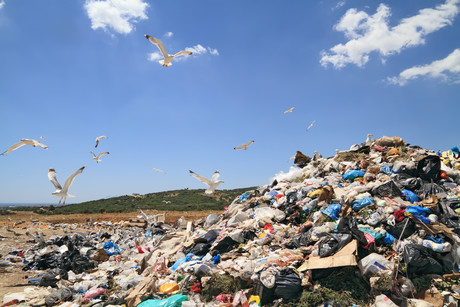Odour management in landfills

Odour management has always been an underlying challenge when it comes to waste management activities such as landfills. Emission of unpleasant odours is a natural and inevitable result of both biological and chemical processes from the decomposition of waste.
Although not all odours derive from biological processes — such as those derived from inorganic chemicals — the majority of odours come from aerobic and anaerobic decomposition that all organic waste undergoes when landfilled or composted.
In the past, unpleasant odours have always been a widely accepted result of industrial activities. However, the modern age has driven a need for change. Not only has the general public’s acceptance of unpleasant odours decreased, the regulations attached to odour management in landfills have become more stringent with EPA compliance requirements becoming compulsory to meet.
Further, the expansion of Australia’s habitable communities has led to a closer proximity between residential areas and landfills causing the tolerance levels for odours in landfills to deteriorate significantly.
With the aim to manage odours in landfills, companies such as OdourPro can design and install odour treatment and management systems to tackle the issue. According to Mark Forbes from OdourPro, the need to provide “ongoing monitoring, maintenance, telemetry and chemical supply services” plays a critical role in managing odour in landfills by treating the source of the odour problem rather than masking it.
In order to determine the appropriate odour management and mitigation measures, it is critical that the origin of the odour is correctly identified, which is why consultation with professional odour management companies is important.
Forbes suggests that in order to address odour management issues in landfills, the relevant approaches are “large area atmospheric misting and vapour generation, as well as topical surface treatment in an overlaying blanket over odorous materials”.
“These technologies not only aid in compliance with EPA enforced boundary odour limits but also reduce resident odour complaints.”
Products such as misting systems act as odour neutralisers with an odour removal estimation of 90 to 100%. These misting systems can be portable for the convenience of the user. Other recommended products include vapour systems, which are airborne odour controllers that act as active deodorisers destroying unpleasant odour particles.
Alternatively, a landfill site can maximise its odour control by using a surface odour control aimed to reduce biochemical oxygen and chemical oxygen demand levels. This type of odour control focuses on relieving volatile organic compounds and hydrogen sulfide, which then stops the production of other odorous by-products. Surface odour controls are designed to be effective, long-lasting, safe and non-toxic, and reduce both clean-up times and costs.
Transforming pill packaging into fencing
The Vinyl Council of Australia is collaborating with several Australian industry partners to...
Eco nappies could release nutrients into the earth
Researchers are developing sustainable sanitary products made from food waste that can either be...
Why private investment is key to a plastic circular economy
To get to a future where plastic circularity is a scalable reality, significant investment needs...











